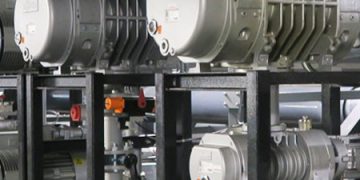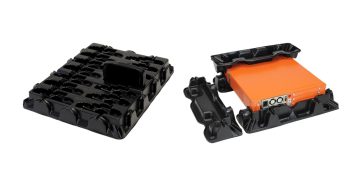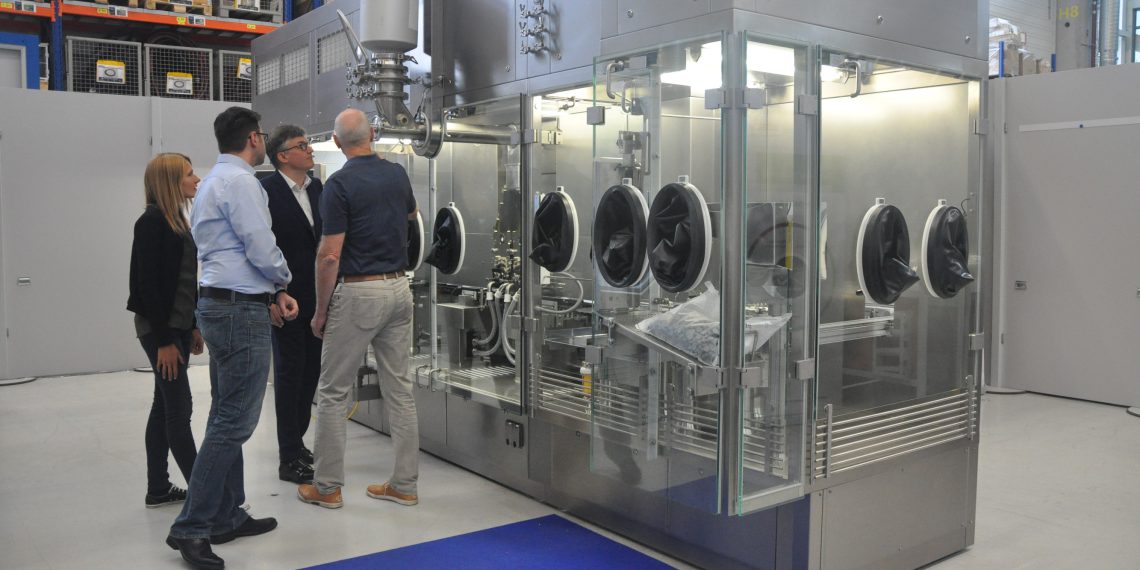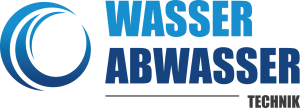As part of an exclusive machine presentation in Crailsheim from September 18 through 29, 2017, Bosch Packaging Technology introduced the latest addition to its AFG series. The filling and closing machine for pharmaceutical powders in glass vials offers manufacturers a wide range of options. “During development, our main focus was on flexibility,” explains Dieter Bandtel, product manager at Bosch Packaging Technology. “With the AFG 5000, customers can choose between several different versions and various features. In addition, we have significantly increased the output rate in the high-performance segment.
New variable transport system
Based on a single machine platform, the system can accurately fill both large and small amounts of powder. Customers have the choice between one filling point for an output of 160 containers per minute through to three filling points for up to 480 vials per minute. Thanks to the vacuum-compressed-air filling system, the output remains high even with small filling amounts. For all versions, customers can choose between statistical or 100% in-process control of dosing weights.
“To optimize efficiency, we have developed a new, flexible transport system for the AFG 5000,” says Bandtel. “While the vials are continuously fed into the machine, the transport system adjusts the speed of the following processes to precisely match the rhythm of the individual work stations.” Whether filling, weighing or closing of vials – each stage is optimally paced. The new vertical transport system was designed to prevent idle time or bottlenecks. Rotating carrier systems, known as shuttles, transfer the vials quickly and safely to the respective work station. Once the vials have been sealed and taken out of the system, the shuttles quickly return to the infeed, ready for the next transport run.
Compact and efficient design
In addition to flexibility, we particularly focused on compact design during the development of the AFG 5000. “Our customers’ powder filling takes place in class B cleanrooms, where every centimeter counts in terms of operating, maintenance and cleaning costs,” explains Bandtel. Apart from the vertical design, the separation of the compact filling station from the intake and output reduced the amount of space that must be cooled and cleaned with sterile, dry air. A further space-saving feature is the optional air-treatment system, which can be installed outside the sterile area.
All components that come into contact with the product can easily be disassembled for cleaning and sterilization. The result is an easy-to use machine with only few format parts, offering customers substantial space- and cost-savings. In line with Bosch’s pharmaceutical line competence, the AFG 5000 can be combined with upstream cleaning machines and sterilizing tunnels, as well as downstream capping equipment to create a complete line for safe and reliable filling processes for pharmaceutical powders.

















